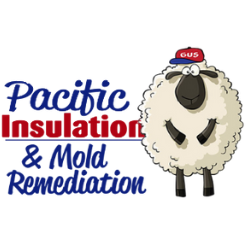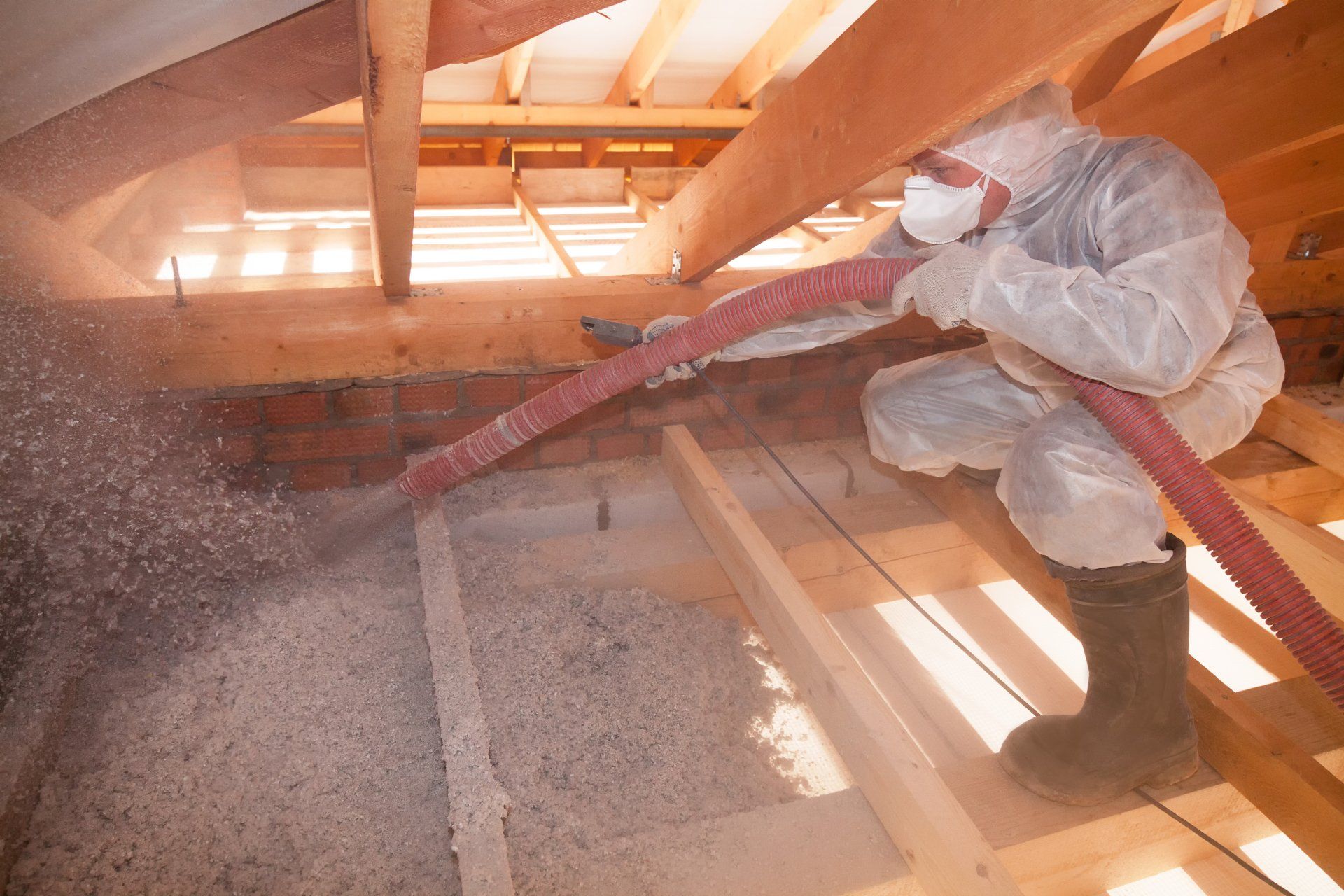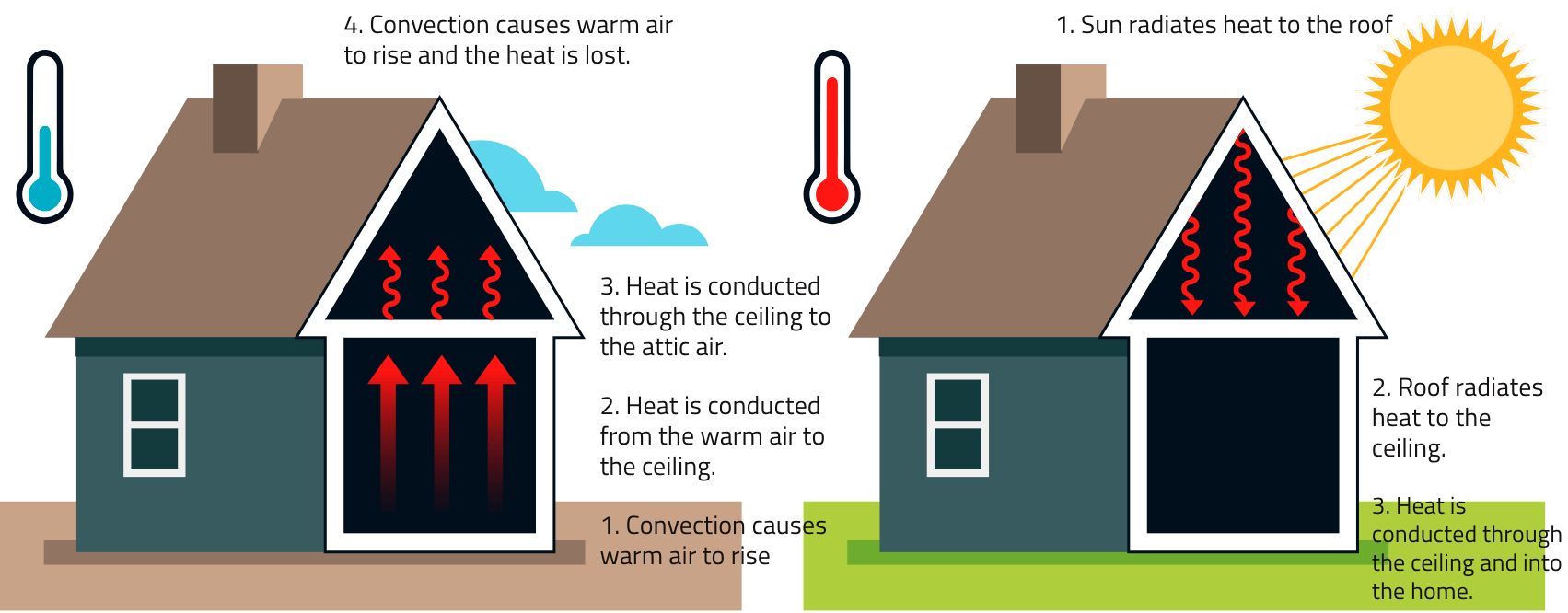BENEFITS OF PROPER INSULATION
INDOOR
DRAFTS
HOW INSULATION WORKS
To understand how insulation works it helps to understand heat flow, which involves three basic mechanisms -- conduction, convection, and radiation. Conduction is the way heat moves through materials, such as when a spoon placed in a hot cup of coffee conducts heat through its handle to your hand. Convection is the way heat circulates through liquids and gases, and is why lighter, warmer air rises, and cooler, denser air sinks in your home. Radiant heat travels in a straight line and heats anything solid in its path that absorbs its energy.
Most common insulation materials work by slowing conductive heat flow and convective heat flow. Radiant barriers and reflective insulation systems work by reducing radiant heat gain. To be effective, the reflective surface must be in contact with an air space.
Regardless of the mechanism, heat flows from warmer to cooler areas until there is no longer a temperature difference. In your home, this means that in winter, heat flows directly from all heated living spaces to adjacent unheated attics, garages, basements, and especially to the outdoors. Heat flow can also move indirectly through interior ceilings, walls, and floors--wherever there is a difference in temperature. During the cooling season, heat flows from the outdoors to the interior of a house.
To maintain comfort, the heat lost in the winter must be replaced by your heating system and the heat gained in the summer must be removed by your cooling system. Properly insulating your home will decrease this heat flow by providing an effective resistance to the flow of heat.
R-VALUES
An insulating material’s resistance to conductive heat flow is measured or rated in terms of its thermal resistance or R-value -- the higher the R-value, the greater the insulating effectiveness. The R-value depends on the type of insulation, its thickness, and its density.
Installing more insulation in your home increases the R-value and the resistance to heat flow. In general, increased insulation thickness will proportionally increase the R-value. However, as the installed thickness increases for loose-fill insulation, the settled density of the product increases due to compression of the insulation under its own weight. Because of this compression, loose-fill insulation R-value does not change proportionately with thickness. To determine how much insulation you need for your climate, consult a local insulation contractor.
The effectiveness of an insulation material’s resistance to heat flow also depends on how and where the insulation is installed. For example, insulation that is compressed will not provide its full rated R-value. The overall R-value of a wall or ceiling will be somewhat different from the R-value of the insulation itself because heat flows more readily through studs, joists, and other building materials, in a phenomenon known as thermal bridging. In addition, insulation that fills building cavities reduces airflow or leakage and saves energy.
The amount of insulation or R-value you'll need depends on your climate, type of heating and cooling system, and the part of the house you plan to insulate.
SIGNS OF AN UNDER-INSULATED ATTIC
Improving your attic insulation is one of the most effective ways to improve home comfort and energy efficiency. Is it time to update your attic? An under insulated attic can be a serious problem for your home, as it can affect your home's comfort level and can contribute to the creation of ice dams. For many older homes, there is not enough insulation to keep the temperature in check. Fiberglass batts or blown-in insulation may have settled or become less effective over time. In such cases, it is time to install new insulation. The added insulation can lower your energy costs and save money on your monthly energy bills.
Uneven temperature in the home is a clear sign that the insulation in the attic is inadequate. A poorly insulated attic will result in drafts and high energy bills. In addition, it's important to feel the ceilings and walls of various rooms. If you can feel the difference in temperature, your attic may need more insulation.
Poor insulation can also cause your home's temperature to fluctuate without a reason. If you notice these extreme changes in temperature in your home, you may need to make an appointment with a professional who will inspect your attic. If you suspect that your attic is under-insulated, you may also want to consider adding a fresh layer of blown cellulose.
When the attic is not properly insulated, it will let heat from the upper floor transfer into the attic pulling heat from other parts of the house and the furnace kicks on pretty frequently to redistribute the air. The heat transfer from upper floors and ultimately a warm attic can cause ice dams in the winter. Ice dams can damage the roof and the resulting moisture problems may even lead to mold. When this happens, the roof insulation will not be effective enough to prevent the problem.
Having an under insulated attic can lead to uncomfortable temperatures, high energy bills, and condensation that can damage roof components.
Customer Reviews
Insulation Rebates
Avista
The 2025 Insulation Rebates have just been released! Attic, Wall and Crawl Space insulation rebates will all be $1.50 per square foot with some stipulations for eligibility. https://www.myavista.com/energy-savings/rebates-washington/insulation
Inland Power
Insulation Rebates for Inland Power customers are $.75 cents per square foot. Please download and read both the Weatherization Specifications Agreement and the Rebate form. https://www.inlandpower.com/insulation
Modern Electric
Insulation Rebates for Modern Electric customers are up to $2.30 per square foot. Please download and read both the Weatherization Specifications Agreement and the Rebate form. https://www.directefficiency.com/modern-residential-insulation-rebate-application/
Vera Water & Power
Insulation Rebates for Vera customers are up to $2.30 per square foot. Please download and read both the Weatherization Specifications Agreement and the Rebate form. https://verawaterandpower.com/residential-rebates-2/
Call Gus at 509-879-0495 to determine your eligibility.








